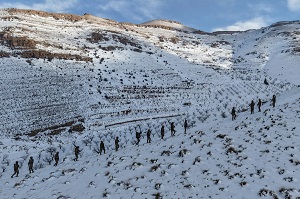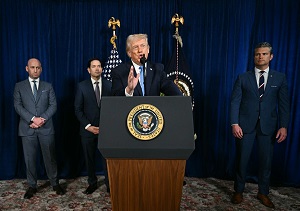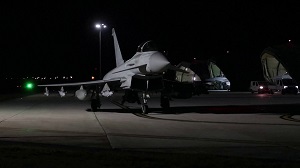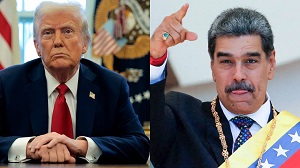Damascus Turns from Drugs Transit Point to Trafficking Hub, Asharq Al-Awsat
As the Syrian regime reclaimed regions that were out of its control in 2018, the drug trade in the war-torn country moved on towards a new phase.
The trade exploded with the eruption of the conflict in 2011. Syria used to be a crossing point for drugs smuggled from Afghanistan and Iran, but now it is both a producer and consumer.
The amount of drugs seized from Syria has risen between six and 21-fold between 2011 and 2020.
International officials and experts have said the problem is so extreme that they have described Syria as a “drugs state” and the “Captagon republic.”
The regime, meanwhile, says it is confronting the phenomenon with “determination and persistence” and that regions under its control are not used to manufacture drugs.
Asharq Al-Awsat toured the streets of the capital, Damascus, and witnessed firsthand individuals who were clearly under the influence of drugs.
Such scenes were rare before 2011.
Residents have repeatedly complained to Asharq Al-Awsat of nearly daily quarrels that erupt between youths, especially late at night, over drugs.
Strolling the streets, youths are often spotted at cigarette vendors, kiosks and cafes where they ask to buy drugs.
Parents have become distressed at the change of behavior in their children, who have neglected their studies, grown closed off and frequently ask for money, signs of their abuse of drugs.
In March, the Syrian Dialogue Center released a report about the drug trade in Syria.
Long before the revolution broke out 2011, Syria was known as a transit point for the drug trade from Afghanistan and Iran, it said.
The smuggling networks were supervised by figures close to the Assad regime. The networks established workshops for manufacturing drugs. Production was limited and aimed at local consumption, stated the report.
With the eruption of the revolution, many drug dealers and smugglers took part in oppressing the protesters and later established an armed militia that was involved in the regime’s military operations.
In 2013, drug dealing activities increased, becoming a source of funding for the militias and regime military operations.
With downturn of the national economy because of war, economic sanctions, and corruption inside the regime, Syria started to export Captagon in 2013, said the report. Aleppo and Homs’ chemical factories were transformed into factories for these pills.
A study by the Center of Operational Analysis and Research (COAR) revealed that the amount of drugs coming from Syria, which were confiscated in 2013-2015, increased four- to six-fold compared to 2011.
After the regime managed to regain most of the areas out of its control in 2018, the drug trade moved to a new level. The size of confiscated drugs coming from Syria in 2018-2020 increased 6-21 times compared to 2011.
The number of local drugs manufacturing centers and workshops increased. The smuggling operations and import of drugs from Lebanon or Iran increased, as demonstrated by the many shipments that were seized. The methods of concealing drugs shipments also became more advanced and sophisticated.
A local study detected 50 current locations that are used for the manufacture of drugs in Syria. It cited 14 centers for manufacturing Captagon, 12 for crystal meth, and 23 for Hashish.
Narcotics, especially Captagon, smuggled out of Syria are usually destined for North Africa, the Arabian Peninsula, and Europe. The available evidence indicates that Europe is now a transit point for narcotics destined for the Middle East and North African markets.
With the collapse of the Syrian economy as a result of the regime’s policies, traditional economic activity gave way to the growing drug trade that has become a profitable sector, the revenues of which fill the pockets of regime associates and its foreign allies, as well as warlords.
In a report in late 2021, The New York Times revealed that the majority of Captagon factories are located in areas held by the regime or the border regions with Lebanon that are controlled by the Lebanese Iran-backed Hezbollah party.
Britain’s The Times also released a report on the Syrian drug trade. Testimonies by security officials in ten countries and experts in the drug trade revealed that a group of businessmen with close ties to the regime, Hezbollah, and other members of the Assad family, who are protected by the regime, are also involved in the illicit trade.
The drug network has benefited from all of Syria’s resources, including human resources. They transformed pharmaceutical laboratories into workshops for manufacturing drugs. Warehouses and ports connected to shipping lanes in the Mediterranean were used along with smuggling routes to Jordan, Lebanon and Iraq - all under the protection of the state, said the Syrian Dialogue Center.
New Captagon production centers were established in small factories, built-in iron hangars, or abandoned villas. The pills are manufactured using simple machines and under the protection of the regime’s soldiers.
Facilities are labelled with signs saying they are closed military sites to cover for the production of the pills.
Two types of Captagon are produced: one of low quality, which sells for a dollar a pill and another of high quality, sold at 14 dollars a pill. The low-quality pills are sold in the local market and the high-quality ones are exported.
The drug trade in Syria, especially Capatagon production, generates 16 billion dollars annually, three times the state’s budget for 2022.
The COAR said authorities in Europe, the Middle East and North Africa have seized a total of at least 173 million Captagon pills, weighing 34.6 tons, and 12.1 tons of hashish, produced in Syria in 2020. The seized narcotics were worth around 3.46 billion dollars.
The drug trade has brought together the regime, Hezbollah and Iran for the sole purpose of finding new sources of funding that helps them evade sanctions, reach new markets for their illicit products and secure foreign currencies.
The regime has, meanwhile, flooded Syria with poor quality drugs, which people have turned to to escape their despair and feeling of helplessness as their country’s economy crumbles.
The regime has claimed that it has cracked down on drug traders, but the raids only target modest smugglers. Figures close to Damascus involved in the trade remain untouched.
Syria commemorated International Day Against Drug Abuse and Illicit Trafficking on June 26. Interior Minister Mohammed al-Rahmoun said Syria “is committed to combating this dangerous phenomenon.”
He revealed that authorities had cracked down on smugglers and seized large quantities of narcotics.
The next day, the semi-official al-Watan newspaper reported that since the beginning of the year, authorities have confirmed 4,991 drug cases in the country, a drop from 9,260 the previous year.
It acknowledged that Syria remains a transit point for the drug trade given its geographic location, but “it in no way manufactures drugs.”




